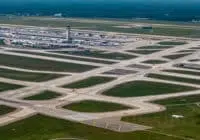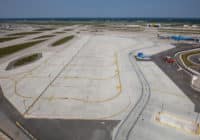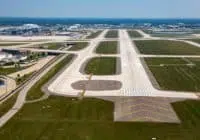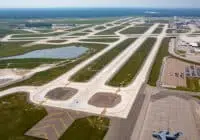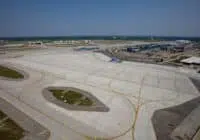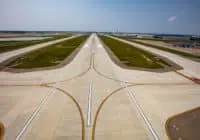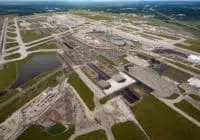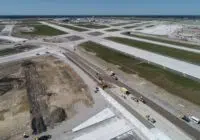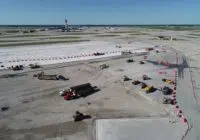Detroit Metropolitan Wayne County Airport (DTW) Centralized Deicing Facility and Runway 21R Hold Bay
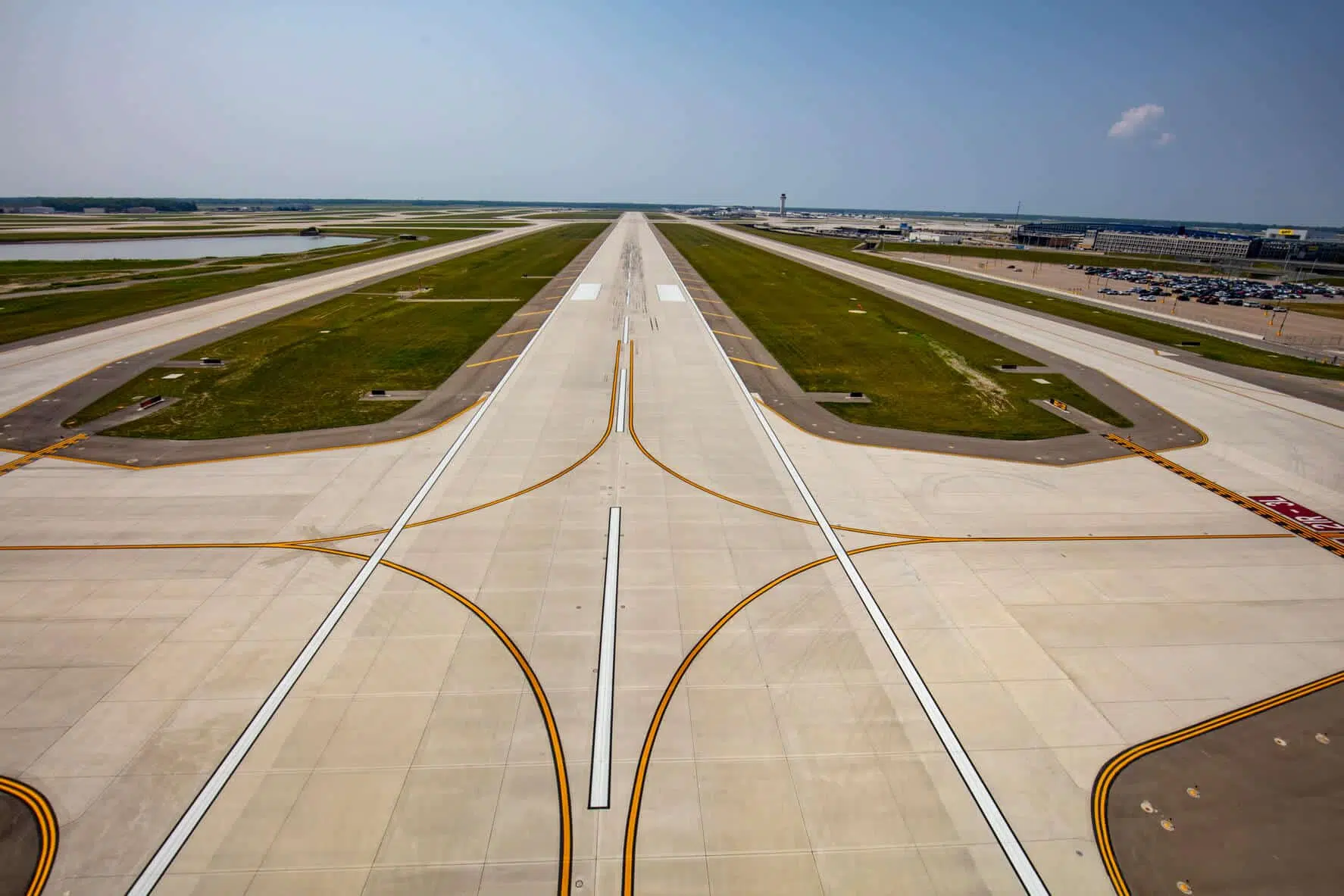
Kimley-Horn provided planning, design, and construction phase services for the construction of a new centralized deicing facility (CDF) at Detroit Metropolitan Wayne County International Airport (DTW).
Overview
The DTW CDF serves all carriers at the airport, with deicing positions for seven Airport Design Group III (ADG III) aircrafts (accommodating airplanes with a tail height up to 45 feet and a wingspan of up to 118 feet), as well as one Airport Design Group V (ADG V) deicing position (for airplanes with a tail height of up to 66 feet and a wingspan up to 214 feet). The facility also includes a new taxi lane, 11 overnight aircraft parking spots, high mast lighting, in-pavement lighting, guidance signs, and associated ancillary facilities that support deicing operations.
Planning & Design Phase
Kimley-Horn evaluated options for the reconstruction of the Runway 21R deice pad based on a location designated in the Airport Master Plan. During the preliminary design, it became evident that the location selected during the master plan process would limit both airfield operations and fixed-based operations and impact revenue-generating landside parking stalls. A new, more centralized location that allowed for a larger deice pad with better aircraft movement to multiple runways was selected, reducing the potential for delays. The CDF design includes the flexibility to add two ADG IIIs or one ADG V aircraft deicing position if needed to accommodate future operations.
Kimley-Horn developed final design documents for pavements, markings, apron lighting, a glycol pump station, and construction phasing and logistics. Together with subconsultants, the team also designed site utilities, grading, drainage, and airfield lighting and signage design.
The project team included infrastructure to capture high and low concentrate glycol run-off from deicing activities. High concentrate run-off is pumped through underground drainage pipes and into above ground tanks for transfer to tanker trucks and offsite reprocessing. Low concentrate run-off is directed to the airport’s existing pond collection system. At the Airport Authority’s request, the glycol collection system for the adjacent Runway 22L deice pad was designed to be interconnected with the CDF’s glycol collection system, providing a single above ground tank location for both facilities.
Construction Phase
The Kimley-Horn team was retained for construction phase services—providing resident engineering, construction observation, and construction administration. The planned footprint of the CDF overlaid an existing terminal building that was demolished before and during early stages of the CDF construction. Unknown subgrade conditions were continuously monitored by onsite geotechnical engineers and unfavorable soil conditions were addressed immediately to avoid delays during construction. The CDF was constructed during the COVID-19 pandemic and as such, social distancing and hygienic protocols were implemented for all contractor and administrative personnel. Meetings were restricted to virtual platforms with rare exceptions. When meetings were conducted in-person, they were hosted in large, open spaces that promoted social distancing.
Community Impact
The construction of this centralized deicing facility not only provides significant improvements during the winter months, but also operational relief during the summer months as the deicing positions may be used as remain overnight parking positions for airlines. The new deicing facility increases the efficiency of deicing operations at individual gates, improves gate utilization and terminal capacity, eliminates secondary deicing for departing planes, and enhances runway safety while improving airfield operations.
Project Recognition
- 2021 Gold Award for Commercial Service Airports; American Concrete Pavement Association
- 2021 Commercial Service Airports; Michigan Concrete Association

